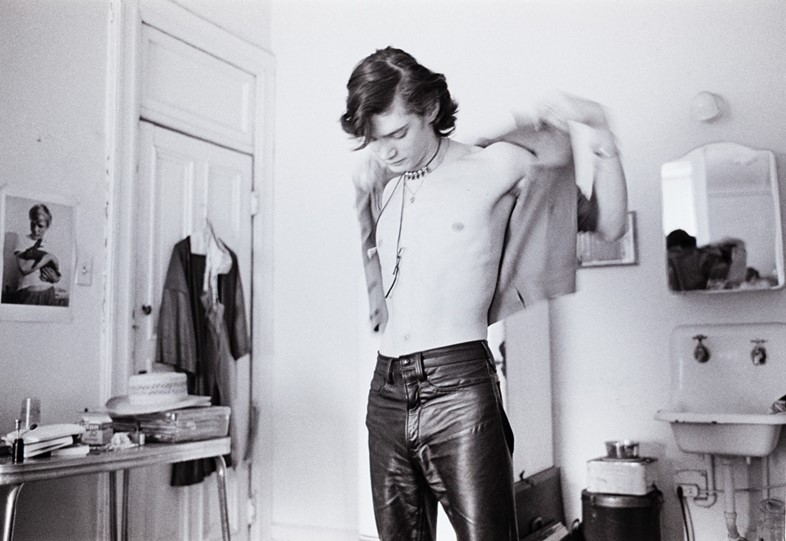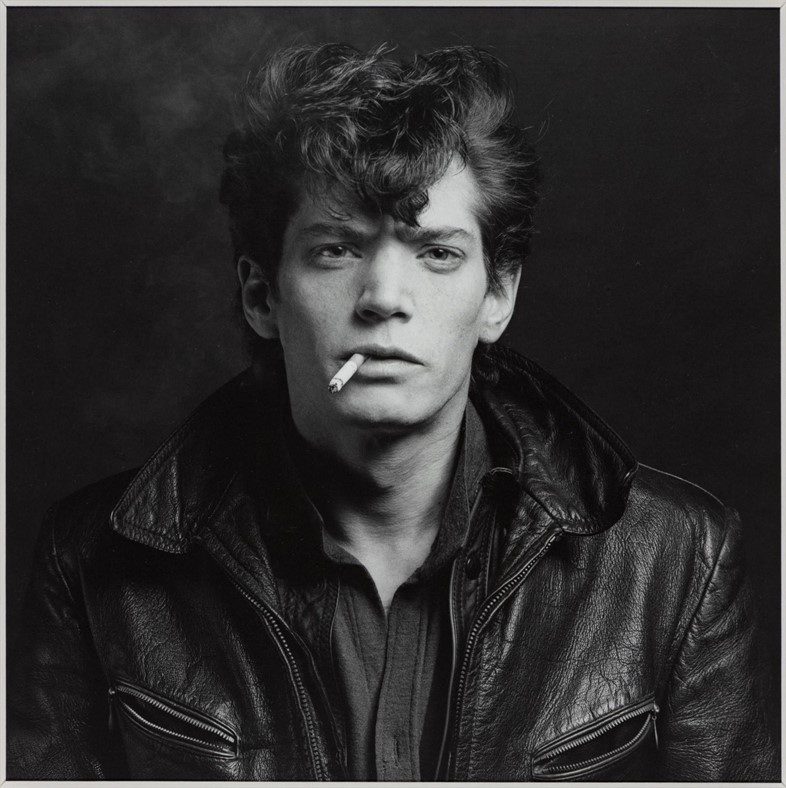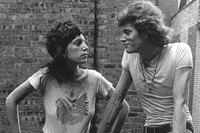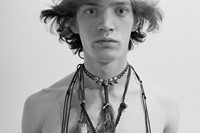In celebration of the Tate Modern's new display of his work within their Artist Rooms, AnOther look back on Robert Mapplethorpe's iconic style
With his chiseled good looks, leather jackets and wild curls, Robert Mapplethorpe was the epitome of handsome during the rock ‘n’ roll liberalism of 1970's New York. He is also the star of the Tate Modern’s 2014 ARTIST ROOMS, a special exhibition featuring intimate self-portraits alongside his photographs of Grace Jones, Roy Lichtenstein, Willem de Kooning and his muse, lover and friend Patti Smith.
Mapplethorpe broke down the sexual taboos of the decade with his erotically charged and controversial photographs of nudity, bondage, prostitution and sadomasochism. He documented social subcultures of the time, challenging racial exploitation and gender boundaries. He himself worked as a hustler, partly for money, partly for curiosity, which he would then feed into his own homoerotic collages which blurred the lines between fashion, art and pornography. There was also a softer side to Mapplethorpe’s work: his botanical studies subtly reference sexual intercourse and his ethereal photographs of Patti Smith have served as her album artwork and book covers. He also made jewellery which he gave to lovers and friends, before being commissioned by the likes of Maxime de la Falaise and Berry Berenson.
"A wayward provocateur, alive in his underworld of debauchery and erotica, but equally shy and withdrawn"
He used imagery of bikers, sailors and cowboys, and his own personal style was a diluted version of this: distressed double denim, leather jackets, sheepskin vests and naval caps, worn with feather necklaces, love beads and coloured handkerchiefs. For years Mapplethorpe, along with Patti Smith, lived day-to-day, sleeping rough and squatting before staying at the notorious Chelsea hotel. In her book, Just Kids, Smith recalls how Mapplethorpe was sought after by men and women, who frequently asked her advice on how to court him. “Love his work,” she would say.

She also poetically describes his charm and social ease. Robert mingled with the crème of 1970s New York, and was a frequent visitor to Studio 54, The Factory and Max’s, counting amongst his friends Yves Saint Laurent, Pierre Bergé and Sam Wagstaff, who would become his mentor and benefactor. She also recalls his internal battle between good and evil: his gimp masks and leather codpieces versus his strict Catholic upbringing. Mapplethorpe was a man of extremes: a wayward provocateur, alive in his underworld of debauchery and erotica, but equally he was shy and withdrawn. “He was an artist,” Smith writes, “and for that he would never apologise.”
ARTIST ROOMS: Robert Mapplethorpe is at Tate Modern until October 26.
Text by Mhairi Graham



